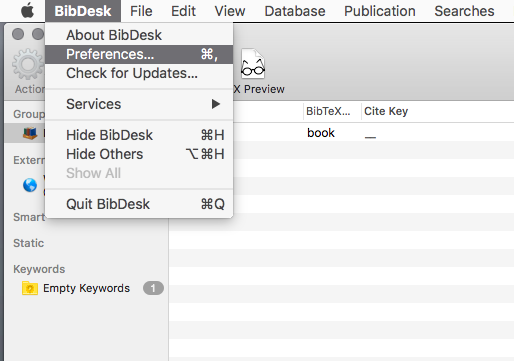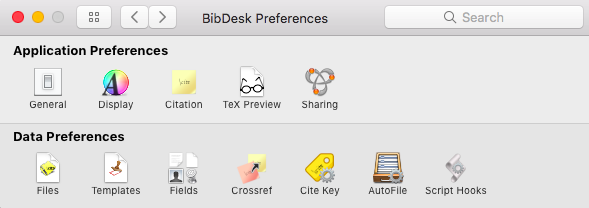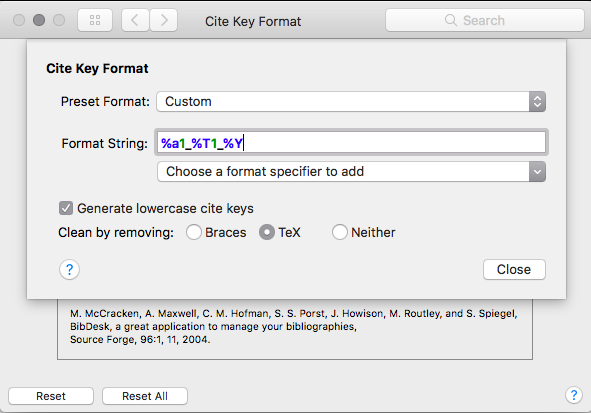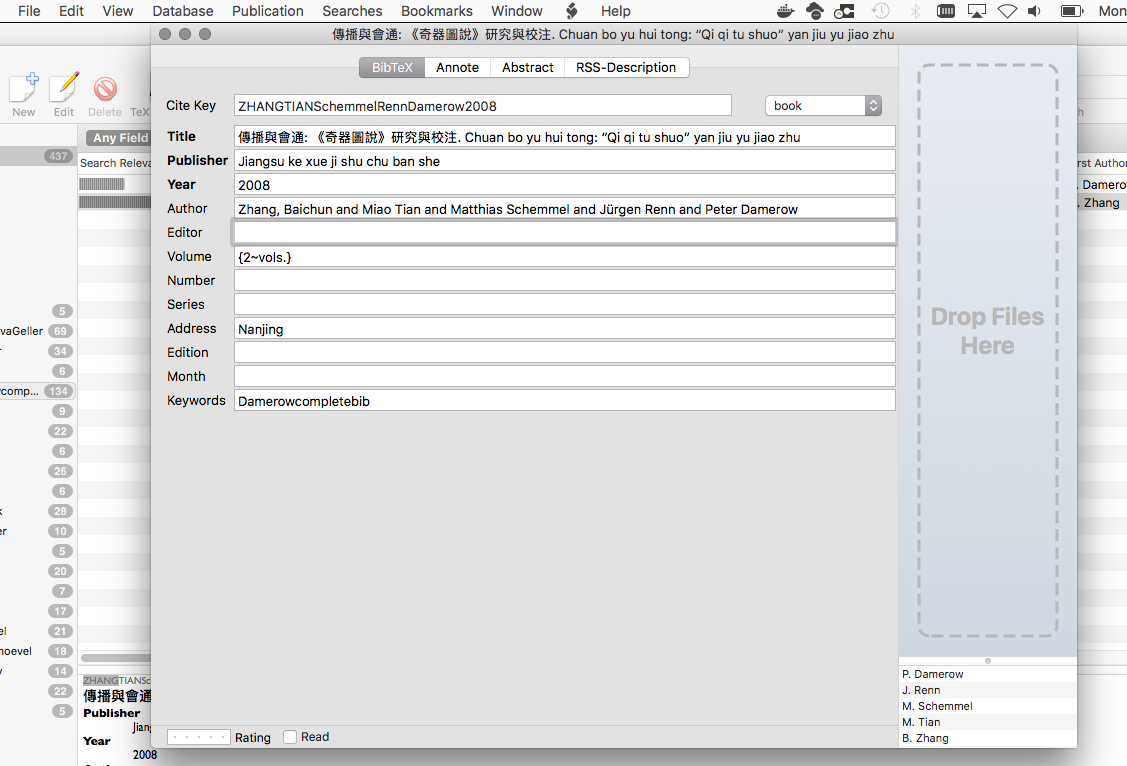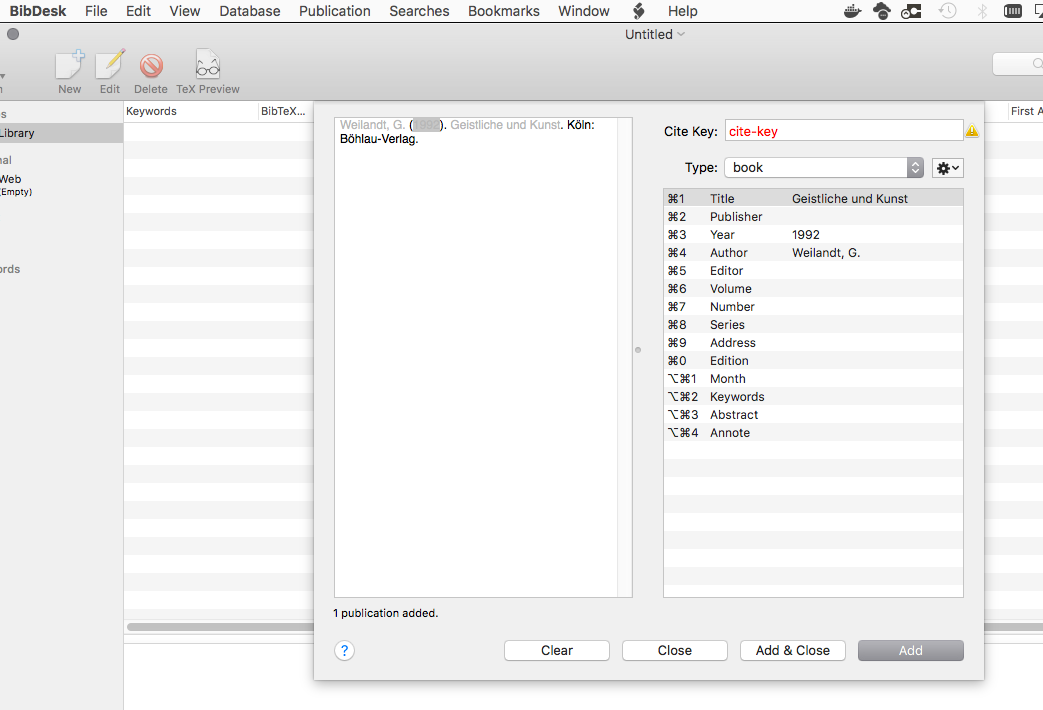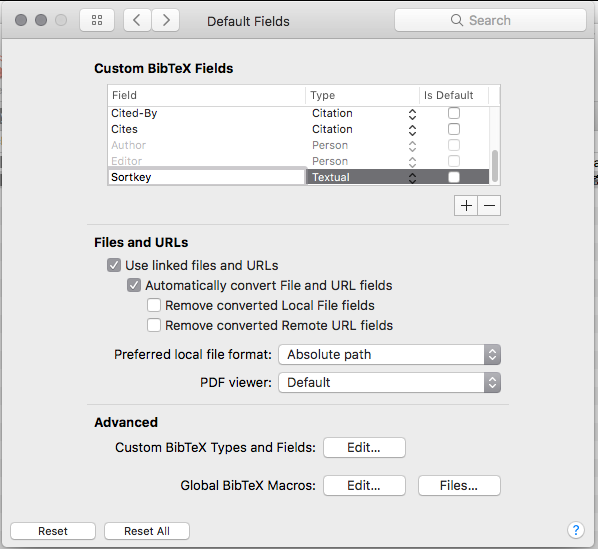Table of Contents
Setup and use of BibDesk
BibDesk is a bibliographic database manager for Mac OS X. It uses the file format BibTex; the file ends with the suffix .bib. After installing MacTEX, the BibDesk program will be automatically installed in the TeX subfolder of your application folder. You can also download the program from the project's homepage. BibDesk is continually being developed and the newer versions should be installed immediately. The user will be informed of new versions via the program's default settings, which offer new updates when the program is opened.
First configuration
BibDesk not only offers basic reference management, but also optional functions such as smart groups or file attachments. These functions are described in detail in the BibDesk manual and on its Wiki page. How far these useful but non-essential functions can simplify the management of your bibliographic database depends on your personal working style.
Before starting to work with BibDesk, two of the default settings must be changed. After starting up the program, select BibDesk • Preferences from the menu bar to open the default settings.
Under Data Preferences • Files select Unicode (UTF-8) from the dropdown menu next to String encoding. The option Convert accented characters to TeX when exporting or pasting BibTeX should be deactivated. Close the Preferences window.
Under Data Preferences • Cite Key select “Advanced” and enter “%a1_%T1_%Y” as the citekey format:
Keywords
An edited volume featuring separate bibliographies at the end of each chapter will still use a single BibDesk file. To manage the various entries for each chapter, it is helpful to use the field Keywords, in which you may enter, for example, Chapter2 or abbreviations such as 2.2. Keywords in the database are automatically displayed in the left column of your BibDesk file. Clicking on an entry with the keyword Chapter2, for example, will cause BibDesk to display only those entries containing this keyword.
Keywords can also be used if you want to include separate bibliographies, e.g. for primary and secondary sources. In that case a keyword like “primary” should be added to all the primary sources and another one like “secondary” for the secondary sources. The printbibliography command can be expanded to print only entries matching a specific keyword.
A BibDesk entry can of course contain multiple keywords.
Convert citations
If you have a list of formatted citations, you can use the function New Publications from Clipboard from the Publication menu to get help with filling in the various fields of the entry. Select entries from a formatted list of publications and select above function. While moving from entry to entry, choose the appropriate publication type, highlight the relevant part (like year, author, or publisher) and press the key combination attached to this field. Select Add before moving to the next entry.
Optional fields
EOATeX offers optional functions and fields to help organize and amend your bibliography (see here). These functions can be permanently activated when creating an extensive bibliography.
For example, to permanently display the field Sortkey, select the Show all button in the Preferences menu bar. All possible displays will now be visible. Select Fields from the Data Preferences. In the Custom BibTeX Fields area, click on the plus sign to create a new entry. In the Field box enter Sortkey, in the Type box enter Textual and tick the Is Default box. The entry Sortkey can also be entered as Sortyear, as is outlined in the following.
If your bibliography is not very long, there is no need to add the fields discussed in the following such as addendum, sortkey or sortauthor. Instead, amendments to your entries can be carried out by adding a new field directly to the entry via Publication • Add Field. BibDesk will then ask for the name of the field, for example, Sortkey. The field will be added to the entry by clicking the Add button.
